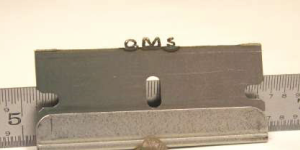Injection Molding Solutions For The Automotive Industry
If you’re in the automotive industry, you’ll know how important it is to produce high quality parts to create your final product. Automotive manufacturers require good molds to make various parts.
A part of automotive manufacturing that cannot be overlooked is the production of plastic parts. Plastic parts can be used for everything from simple buttons, to side panels that finish off doors on the inside and even bumpers. It’s remarkable how many plastic parts are needed to manufacture just a single vehicle.
As you’ll know, the standard process for manufacturing many automotive parts is through injection molding. Injection molding is meant to be a reliable process for manufacturing many identical parts within the shortest amount of time possible. The aim of those who make a mold, is to rapidly produce parts without having to compromise on the quality of the parts they produce.
Most molders are aware of the inherent limitations that slow down production and depending on the polymer and mold process that’s being used, cooling times can limit the amount of parts a single mold will reasonably be able to manufacture within a set amount of time. But even though there are obvious limitations on the capacity of your plastic injection molds, you should still be aiming to get the most out of them.
Like in any industry producing plastic parts, your injection molds are vital in order for you to keep manufacturing your product. But what distinguishes the automotive industry from many other industries is that the quality of plastic parts produced by automotive manufacturers is expected to be of a higher standard than many. Your final product is expected to last many years.
To produce high quality parts, you’ll need to use durable plastics that posses qualities that make them suitable for their various applications. You’ll also need to monitor the process and the quality of every part that’s produced carefully so that you can pick up problems as soon as they occur. But before you can start to work your magic, you need to see to it that your molds will be able to perform.
Bad Molds Make Bad Parts
No amount of expertise in molding can correct faulty parts if a mold isn’t functioning properly. In the automotive industry, the materials used for plastic parts tend to be expensive and a faulty mold can end up costing a company a lot of money.
There’s a good chance that your plastic injection molds are subjected to high temperatures and pressure levels on a daily basis. After all, that’s how they’re meant to work. But even though molds are technically meant to function under these conditions, they aren’t always able to do so.
For a mold to function as it supposed to, two things have to be done right.
Choose Your Mold Manufacturer Carefully
The first of step to getting a mold to function as it’s supposed to, is to adhere to high quality standards while manufacturing the mold. Plastic molds should be made with technical precision and care. A highly skilled team of qualified professionals is needed to do this.
There’s a reason why plastic molds still tend to be expensive pieces of equipment, molds are meticulously engineered to perform adequately under the conditions in which they operate. Many things have to be accounted for in both the design and construction of every mold. If the initial design and production of a mold isn’t next to flawless, it can easily break down before expected.
The lifetime of a single mold should warrant its cost, but unfortunately that won’t happen if the right process wasn’t implemented to manufacture the mold. It’s important that automotive manufactures know what the estimated lifetime will be of every mold they acquire. If you know how long a mold should ideally last, you can get an idea of the quality of molds produced by different mold manufactures by asking them about the estimated lifetime of the molds they specifically produce.
Stick To A Mold Maintenance Schedule
The second part of having molds that operate optimally is to see to it that they are regularly maintained according to a realistic maintenance schedule. Some mold owners work their molds until they break down, but that can harm the mold irreparably.
Because of the conditions molds have to operate in, wear and tear is a normal issue that will occur whenever injection molds are used. This can’t be avoided, and even the best mold money can buy will eventually need to be sent off for maintenance.
What mold owners should understand, is that parts produced with a mold will gradually be of a lower and lower quality. The last few parts produced before a mold breaks down are much more likely to be flawed than the ones that were made when the mold was still new. This can lead to an inconsistent quality from one part to the next, leading to an inconsistency in the quality of your product as a whole.
On the other hand, molds that are maintained properly will keep producing parts that you can rely on. The life expectancy of a well-maintained mold is also considerably higher. So much in the same way automotive manufacturers recommend a service plan for their vehicles, mold manufacturers highly recommend a maintenance schedule for their injection molds.
At Quality Mold Shop, we specialize in designing, manufacturing and maintaining molds. Precision equipment allows us to offer a wide range of solutions to customers in the automotive industry and we’re able to manufacture and maintain molds of almost any size or shape.

 The results that mold makers are able to attain using micro lasers can be accurate to 0.025 of an inch. This means that mold makers who use micro lasers will often be able to both repair and create molds that are much more accurate than those without a micro laser.
The results that mold makers are able to attain using micro lasers can be accurate to 0.025 of an inch. This means that mold makers who use micro lasers will often be able to both repair and create molds that are much more accurate than those without a micro laser. 

 Tweet About This Article!
Tweet About This Article!
Recent Comments